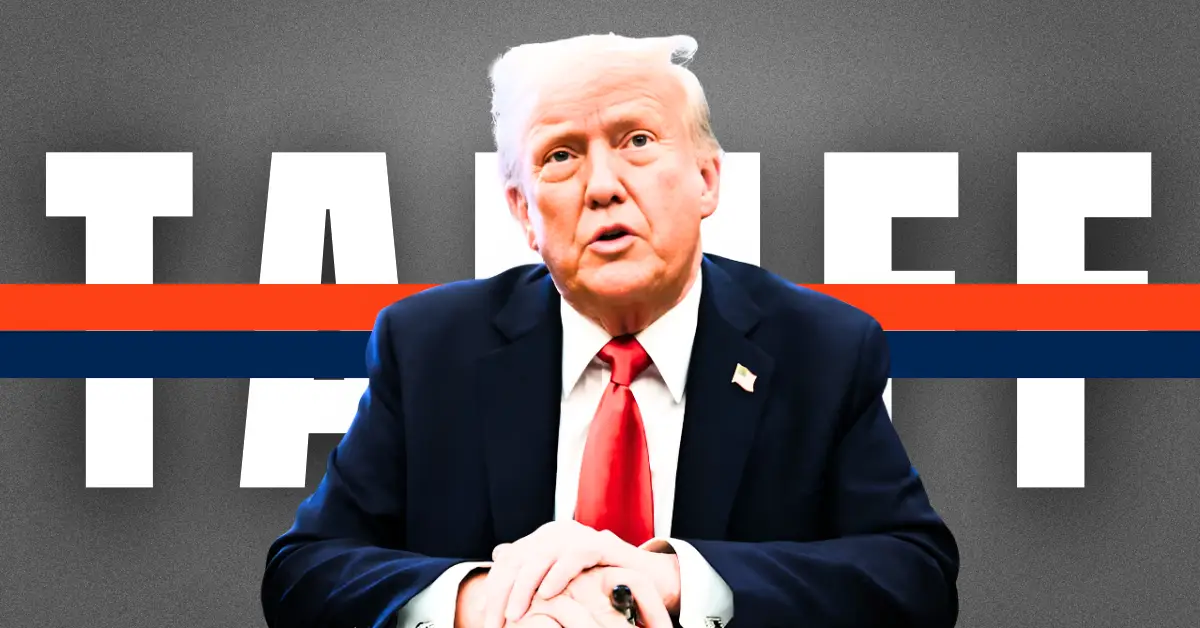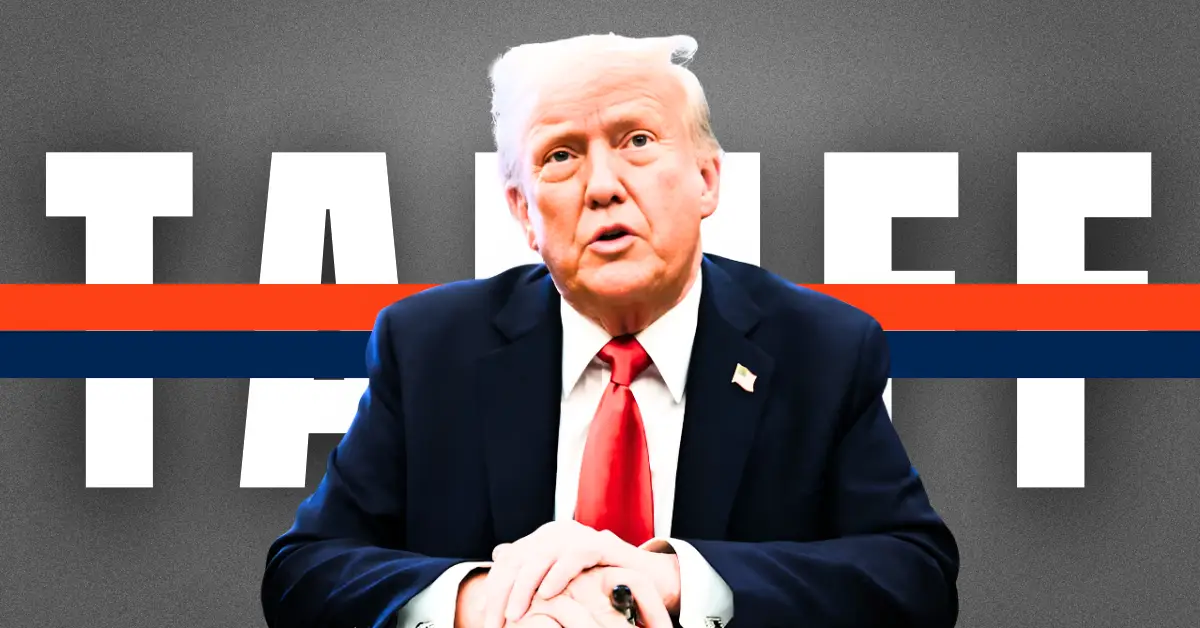The specter of tariffs looms large once again, as former President Donald Trump has reignited the debate over trade policy with a bold announcement of new tariffs set to take effect on August 1st. This move, which has sent shockwaves through global markets, is not merely a continuation of past trade disputes but a potential escalation that could reshape international commerce. The implications of this tariff blitz are far-reaching, affecting everything from cryptocurrency markets to the cost of life-saving pharmaceuticals. As the world braces for impact, it is crucial to examine the motivations behind these tariffs, the potential consequences, and the broader implications for global trade.
The Resurgence of Tariffs: A Familiar Strategy with New Stakes
Trump’s announcement of new tariffs is a strategic maneuver that harkens back to his previous trade policies, which often relied on the imposition of tariffs to pressure trading partners into renegotiating agreements. The current threat is framed as an ultimatum: negotiate new trade deals by August 1st or face significantly higher tariffs. This approach is not without precedent, as Trump has previously used tariffs as a bargaining chip in negotiations with China, the European Union, and other trading partners. However, the stakes are higher this time, as the global economy is still grappling with the aftermath of the COVID-19 pandemic and the ongoing geopolitical tensions.
The legal framework underpinning these tariffs is the International Emergency Economic Powers Act (IEEPA), which grants the President sweeping authority to regulate commerce in times of national emergency. The use of IEEPA in this context has raised eyebrows, as some legal experts argue that the invocation of emergency powers for trade purposes may be constitutionally dubious. This legal uncertainty adds another layer of complexity to the situation, as the enforceability and longevity of these tariffs could be challenged in court.
The Global Reach of the Tariff Offensive
The scope of Trump’s tariff offensive is broad, targeting a diverse array of nations, including economic powerhouses like South Korea and Japan, as well as developing countries such as Laos, Myanmar, South Africa, Malaysia, and Kazakhstan. The proposed tariff rates vary, with some goods facing a 25% tariff and others potentially subjected to a staggering 40% tariff. This wide net underscores the interconnectedness of the global economy, where tariffs imposed on one nation can have ripple effects across multiple industries and regions.
For instance, tariffs on Japanese automakers could disrupt the global automotive industry, leading to higher prices and reduced consumer choice. Similarly, tariffs on pharmaceutical imports could have devastating consequences for patients and healthcare systems, as many drugs and active ingredients are sourced from overseas. The potential for a 200% tariff on pharmaceuticals, in particular, has raised alarm bells among healthcare providers and patients who rely on affordable medications.
Market Reactions: Volatility and Uncertainty
The immediate market reaction to Trump’s tariff announcements has been volatile, with U.S. stock markets experiencing a dip and the S&P 500 posting its worst single-day decline in weeks. The cryptocurrency market, often seen as a safe haven during times of economic uncertainty, has also felt the tremors. Bitcoin, while showing some resilience, has experienced price fluctuations as investors grapple with the potential fallout from the trade war.
Some analysts suggest that the market may have already priced in the possibility of these tariffs, indicating a degree of skepticism or resignation among investors. This could explain why the market reaction hasn’t been more severe. However, the underlying anxiety remains, as the long-term consequences of a full-blown trade war are difficult to predict. The uncertainty surrounding the tariffs has led to a climate of risk aversion, with investors seeking safer assets and avoiding riskier investments.
The Crypto Connection: A Double-Edged Sword
The relationship between tariffs and cryptocurrency is complex and multifaceted. On one hand, some argue that Bitcoin and other cryptocurrencies could serve as a safe haven during times of economic turmoil, offering investors an alternative to traditional assets that are more susceptible to government policies and trade disputes. The decentralized nature of cryptocurrency could provide a hedge against the disruptions caused by tariffs.
On the other hand, tariffs can create a climate of uncertainty and risk aversion, leading investors to flee riskier assets, including cryptocurrencies. Moreover, a global economic slowdown triggered by trade wars could dampen overall investment sentiment, negatively impacting the crypto market. The fact that Bitcoin is holding steady may signal resilience, but it is crucial to remember that the situation is constantly evolving. As the August 1st deadline approaches, the crypto market will likely remain volatile, with investors closely monitoring developments.
Pharmaceuticals in the Crosshairs: A Prescription for Pain
One of the most alarming aspects of Trump’s tariff threats is the potential for imposing a massive 200% tariff on pharmaceutical imports. Such a move could have devastating consequences for patients and healthcare systems, potentially leading to skyrocketing drug prices and reduced access to essential medications. The pharmaceutical industry is heavily reliant on global supply chains, with many drugs and active ingredients sourced from overseas. A 200% tariff would disrupt these supply chains, forcing pharmaceutical companies to either absorb the costs or pass them on to consumers.
The impact would be particularly severe for patients with chronic conditions who rely on imported medications to manage their health. The potential for a 200% tariff has raised concerns among healthcare providers and patients, who fear that the cost of life-saving drugs could become prohibitively expensive. The pharmaceutical industry is already grappling with the challenges of the COVID-19 pandemic, and the imposition of such a high tariff could exacerbate these challenges, leading to further disruptions in the supply of essential medications.
The European Union: A Deal with Caveats
Amidst the tariff threats, there have been reports of the U.S. offering the European Union a 10% tariff deal. However, this offer comes with caveats, suggesting that negotiations are still ongoing and that the threat of tariffs remains a bargaining chip in the U.S.’s trade strategy. The EU has been a frequent target of U.S. trade policy in recent years, and the prospect of renewed tariffs has raised concerns about a potential transatlantic trade war. A 10% tariff deal might provide some relief, but it also highlights the precariousness of the trade relationship and the potential for future disputes.
The EU has been working to strengthen its trade relationships with other countries, including China and Japan, in an effort to mitigate the impact of U.S. tariffs. However, the threat of tariffs remains a significant challenge, as the EU is heavily reliant on trade with the U.S. for a wide range of goods and services. The potential for a transatlantic trade war could have far-reaching consequences for both the EU and the U.S., as well as for the global economy.
A Strategist’s Perspective: Is This Just Noise?
Some analysts believe that Trump’s tariff threats are more bark than bite, a negotiating tactic designed to extract concessions from trading partners. The idea is that by creating a sense of urgency and uncertainty, the U.S. can pressure other countries to agree to more favorable trade terms. However, this strategy carries significant risks. If trading partners call Trump’s bluff and refuse to negotiate, the U.S. could be forced to follow through with the tariffs, leading to a trade war that harms all parties involved.
Moreover, even if the tariffs are ultimately avoided, the constant threat of trade disputes can erode trust and undermine international cooperation. The uncertainty surrounding the tariffs has already led to a climate of risk aversion, with businesses and investors seeking to mitigate the potential impact of a trade war. The long-term consequences of this uncertainty could be significant, as it could lead to a more fragmented and less cooperative global trading system.
Looking Ahead: Navigating the Tariff Minefield
As August 1st approaches, businesses and investors must prepare for a period of heightened volatility and uncertainty. Diversifying investments, hedging against currency fluctuations, and carefully monitoring supply chains are just some of the strategies that can help mitigate the risks associated with tariffs. Governments also have a crucial role to play in de-escalating trade tensions and promoting a more stable and predictable international trade environment. Dialogue, negotiation, and a willingness to compromise are essential to avoiding a costly and destructive trade war.
The revival of tariff threats under Trump is not merely a continuation of past trade disputes, but a potential catalyst for a new era of global economic uncertainty. The consequences of these actions could ripple through markets, impacting everything from cryptocurrency valuations to the accessibility of crucial pharmaceuticals. While some view these tactics as calculated maneuvers, the inherent risks are undeniable. As August 1st looms, the world watches, anticipating whether these threats will materialize into tangible actions, or whether they will remain mere rhetoric in the complex tapestry of global trade. The unfolding drama underscores the need for careful consideration and strategic planning, as the global economy navigates this uncertain terrain.












